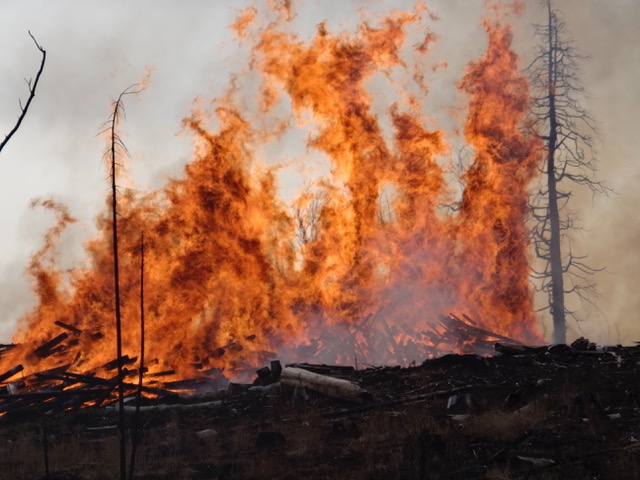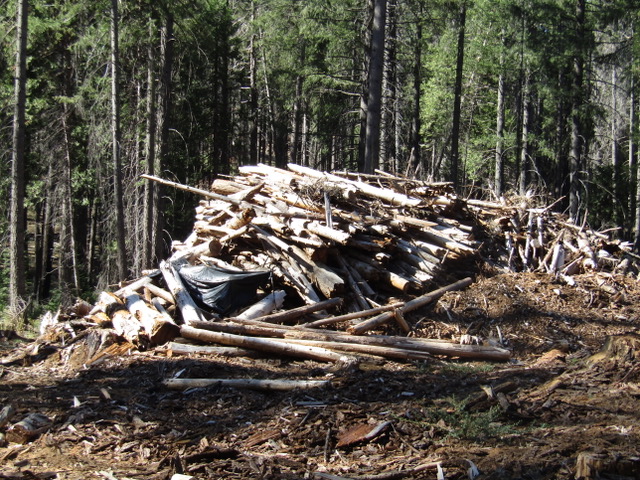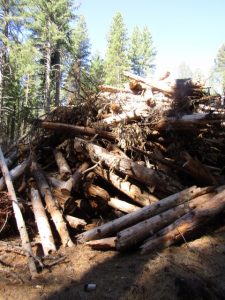For nearly 30 years CSERC has supported making economic use of waste wood material from the forests of the Sierra Nevada region. Each year huge amounts of logging slash end up being left on the ground (resulting in increasingly dangerous levels of woody material to feed wildfires). On national forest lands, most logging slash (as well as some dead brush and other woody materials) is routinely piled in thousands of piles that are then burned in the forest.

Burning wood without any filters obviously results in all the pollutants and particulate matter going into the air without any emission reductions. In contrast, if that same waste wood can be chipped and then trucked to regional biomass cogeneration facilities, the chips can be burned far more cleanly and the air emissions can be greatly reduced.
In addition, burning the waste wood at biomass plants (instead of burning it out in the forest) allows the biomass facilities to produce electricity - an extra value that adds to the cleaner burning benefit.
CSERC endorses the well-researched and well-worded Biomass Report produced by the Sierra Business Council. It's a valuable information guide to understanding options for economic uses for woody material that otherwise just gets burned in the forest.

As of January 2020, staff with the Stanislaus National Forest reported that the Forest Service had 15,000 piles within that forest that need to be burned in 2020. Altogether, just in the national forests of the Sierra Nevada region, as many as 100,000 piles each year will be burned in the open unless economic ways are found to transport that same wood to biomass facilities where the wood can be burned more cleanly.


